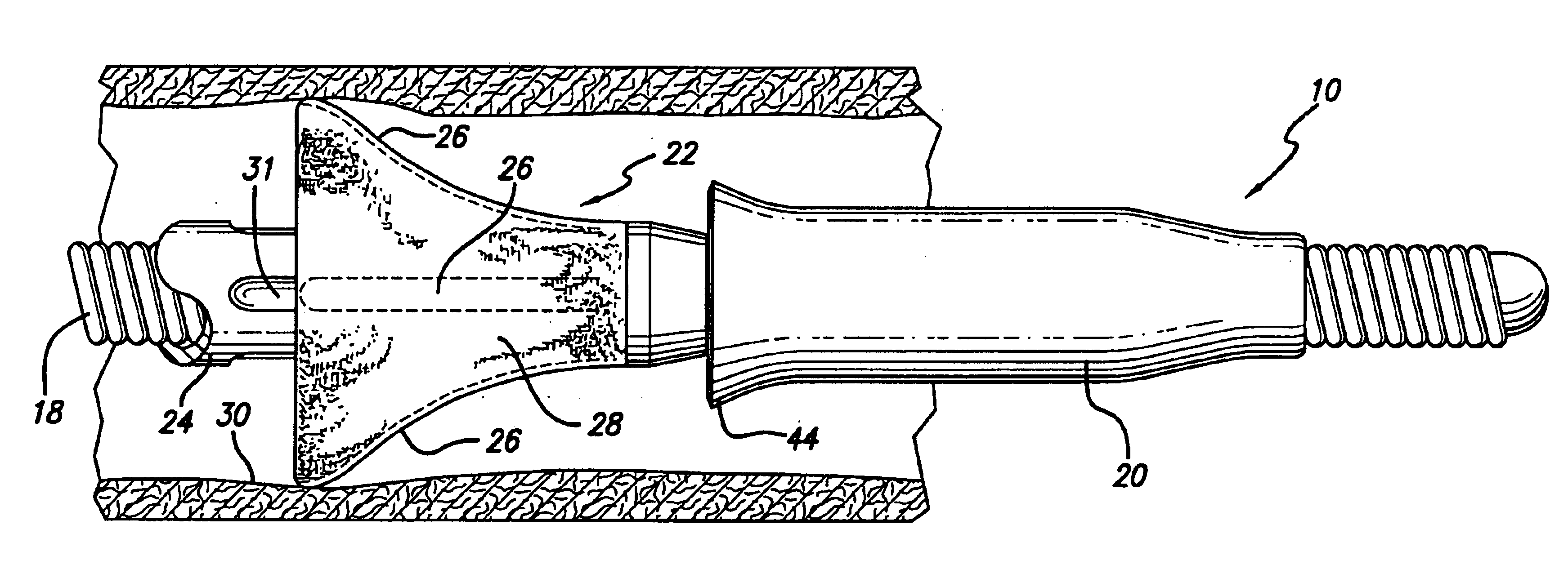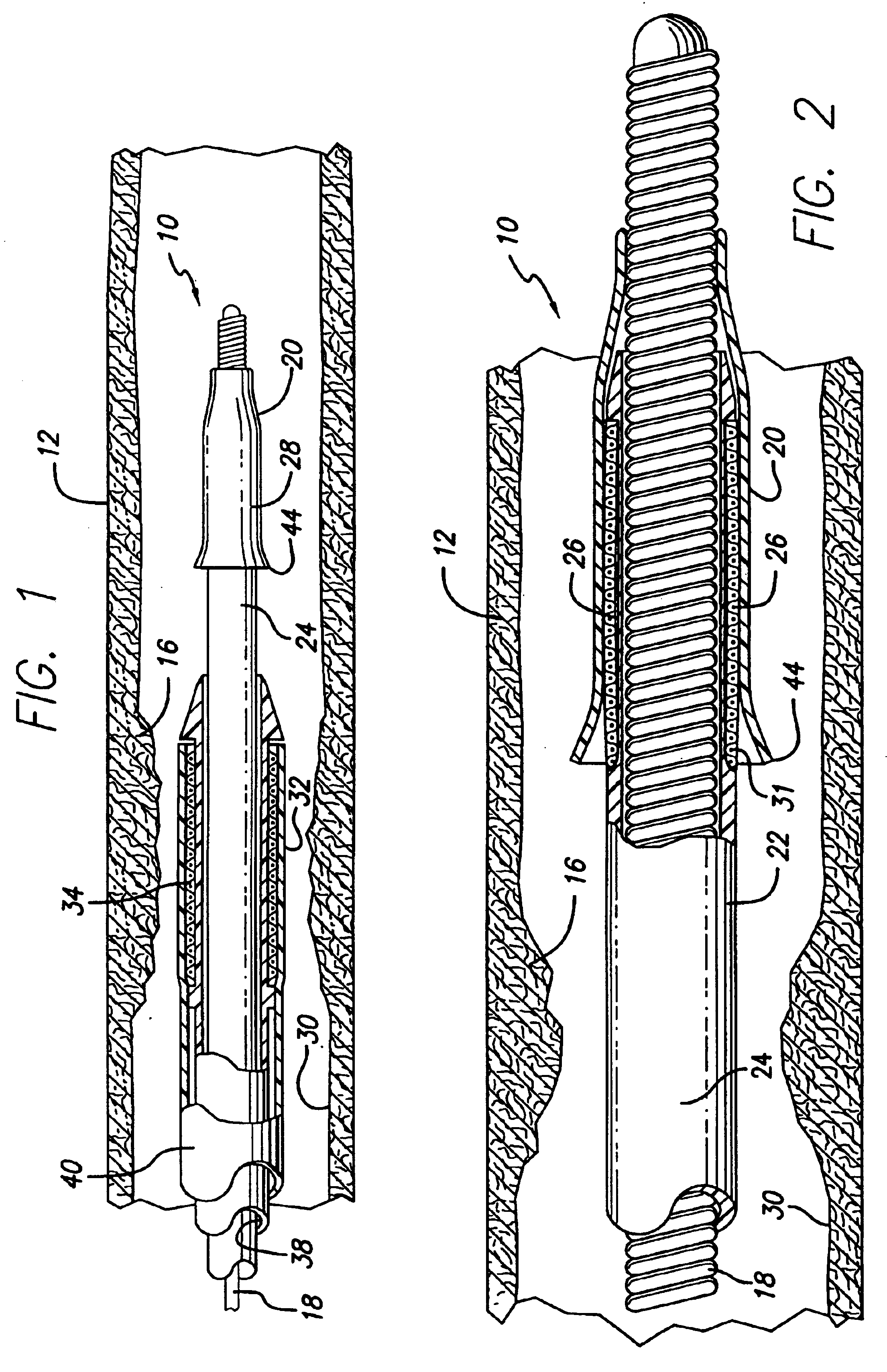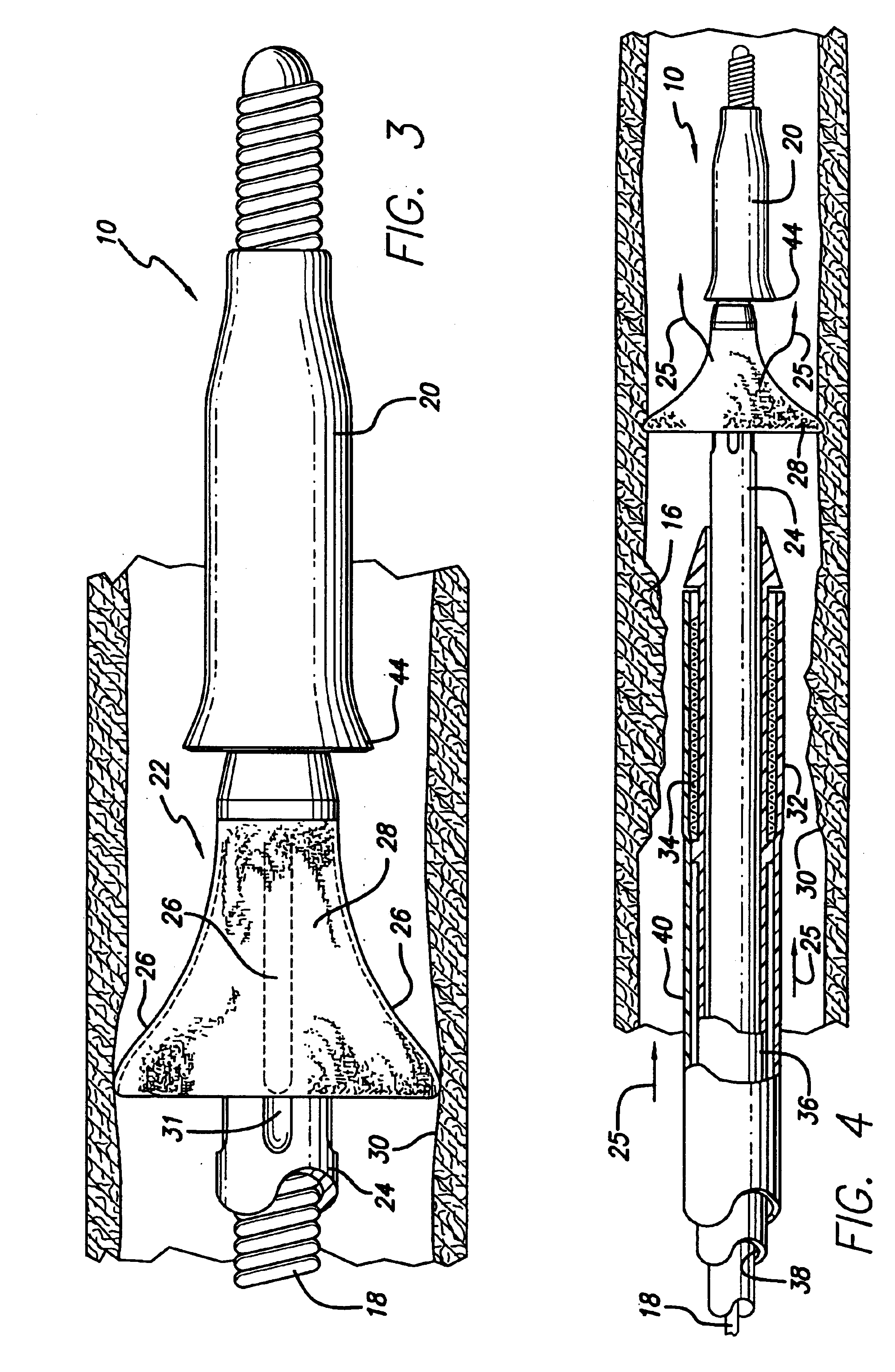Embolic protection guide wire
a technology of emboli and guide wire, which is applied in the field of emboli protection guide wire, can solve the problems of emboli trapped in the filter, unable to escape, damage to the trace release of emboli, etc., and achieve the effect of preventing any backflow of trapped emboli
- Summary
- Abstract
- Description
- Claims
- Application Information
AI Technical Summary
Benefits of technology
Problems solved by technology
Method used
Image
Examples
Embodiment Construction
[0017]A device generally indicated at 10 and constituting one preferred embodiment of the present invention traps and removes emboli from a body vessel. The device 10 is adapted to be disposed in a blood vessel 12 to pass the fluid (blood) in the vessel and block the passage of emboli 14 (FIG. 5) in the fluid. The emboli 14 are produced when the blood vessel 12 is treated at the position of a lesion 16 during an interventional procedure such as, a balloon angioplasty procedure, a stenting procedure, an atherectomy procedure and the like. The present invention is designed to collect and remove such embolic debris from the artery to prevent the blockage of the smaller vessels downstream from the area of treatment. The device 10 is especially adapted to prevent blockage of small blood vessels leading to the brain which, if blocked, can result in the patient suffering a stroke.
[0018]The device 10 includes a flexible guide wire 18 on which is mounted a sheath 20 made from a suitable mate...
PUM
 Login to View More
Login to View More Abstract
Description
Claims
Application Information
 Login to View More
Login to View More - R&D
- Intellectual Property
- Life Sciences
- Materials
- Tech Scout
- Unparalleled Data Quality
- Higher Quality Content
- 60% Fewer Hallucinations
Browse by: Latest US Patents, China's latest patents, Technical Efficacy Thesaurus, Application Domain, Technology Topic, Popular Technical Reports.
© 2025 PatSnap. All rights reserved.Legal|Privacy policy|Modern Slavery Act Transparency Statement|Sitemap|About US| Contact US: help@patsnap.com



